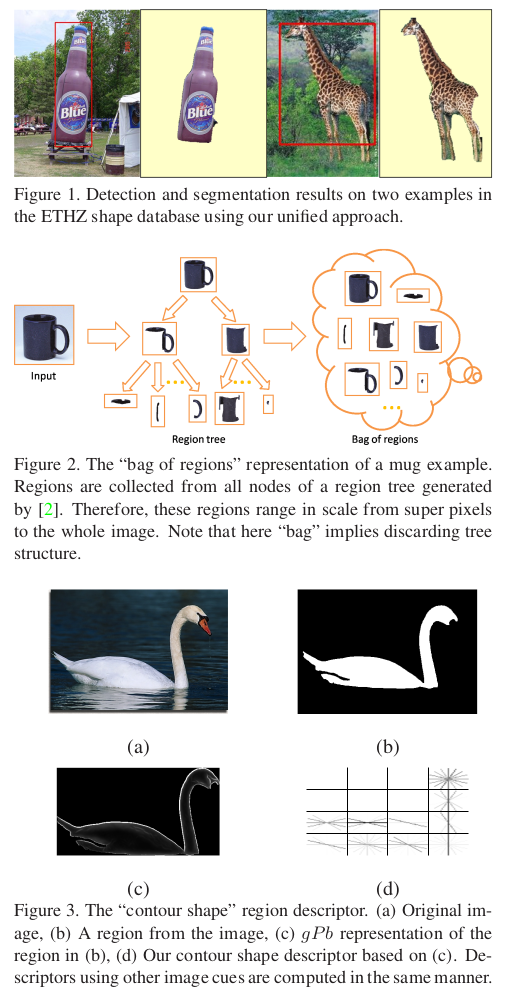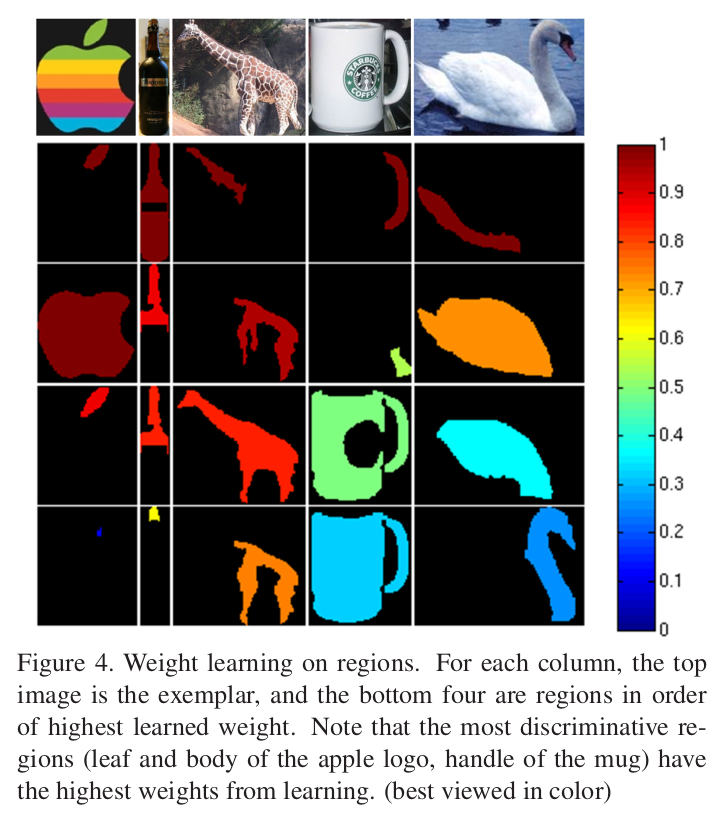The contents in this post are excerpted from the paper “Recognition using regions” 1.
This paper presents a unified framework for object detection, segmentation, and classification using regions. Region features are appealing in this context because: (1) they encode shape and scale information of objects naturally; (2) they specify the domains on which to compute various features, without being affected by clutter from out-side the region.
The pipeline of this region-based recognition framework is as follows:
- Each image is represented by a bag of regions derived from a region tree as shown in Figure 2;
- Regions are described by a rich set of cues (shape, color and texture) inside them;
- Region weights are learned using a discriminative max-margin framework;
- A generalized Hough voting scheme is applied to cast initial hypotheses of object locations, scales, and support based on region matching;
- These hypotheses are then refined through a verification classifier and a constrained segmenter, respectively, to obtain final detection and segmentation results.
Region Extraction
The authors start by constructing a region tree using the hierarchical segmentation engine by Arbelaez et al. (2009). The regions the authors consider are the nodes of that tree, including the root which is the entire image. The authors use them as the basic entities for this approach.

Region Description
The authors describe a region by subdividing evenly its bounding box into an \(n \times n\) (\(4 \times 4\) in the paper) grid, as illustrated in Figure 3. Each cell encodes information only inside the region. The different region cues the authors capture from the cells are: contour shape, edge shape, color, and texture.
Discriminative Weight Learning
Not all regions are equally significant for discriminating an object from another. For example, wheel regions are more important than uniform patches to distinguish a bicycle from a mug. Here, the authors adapt the framework by Frome et al. (2006) for learning region weights.

Voting
The goal here, given a query image and an object category, is to generate hypotheses of bounding boxes and (partial) support of objects of that category in the image. (I don’t understand yet)
Verification
A verification classifier is applied to each bounding box hypothesis from voting. (I don’t understand yet)
Segmentation
The segmentation task we consider is that of precisely extracting the support of the object. (I don’t understand yet)
Reference:
-
Gu, Chunhui, Joseph J. Lim, Pablo Arbeláez, and Jitendra Malik. “Recognition using regions.” In 2009 IEEE Conference on computer vision and pattern recognition, pp. 1030-1037. IEEE, 2009. ↩
